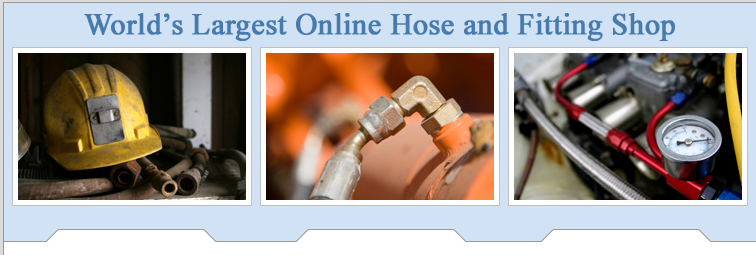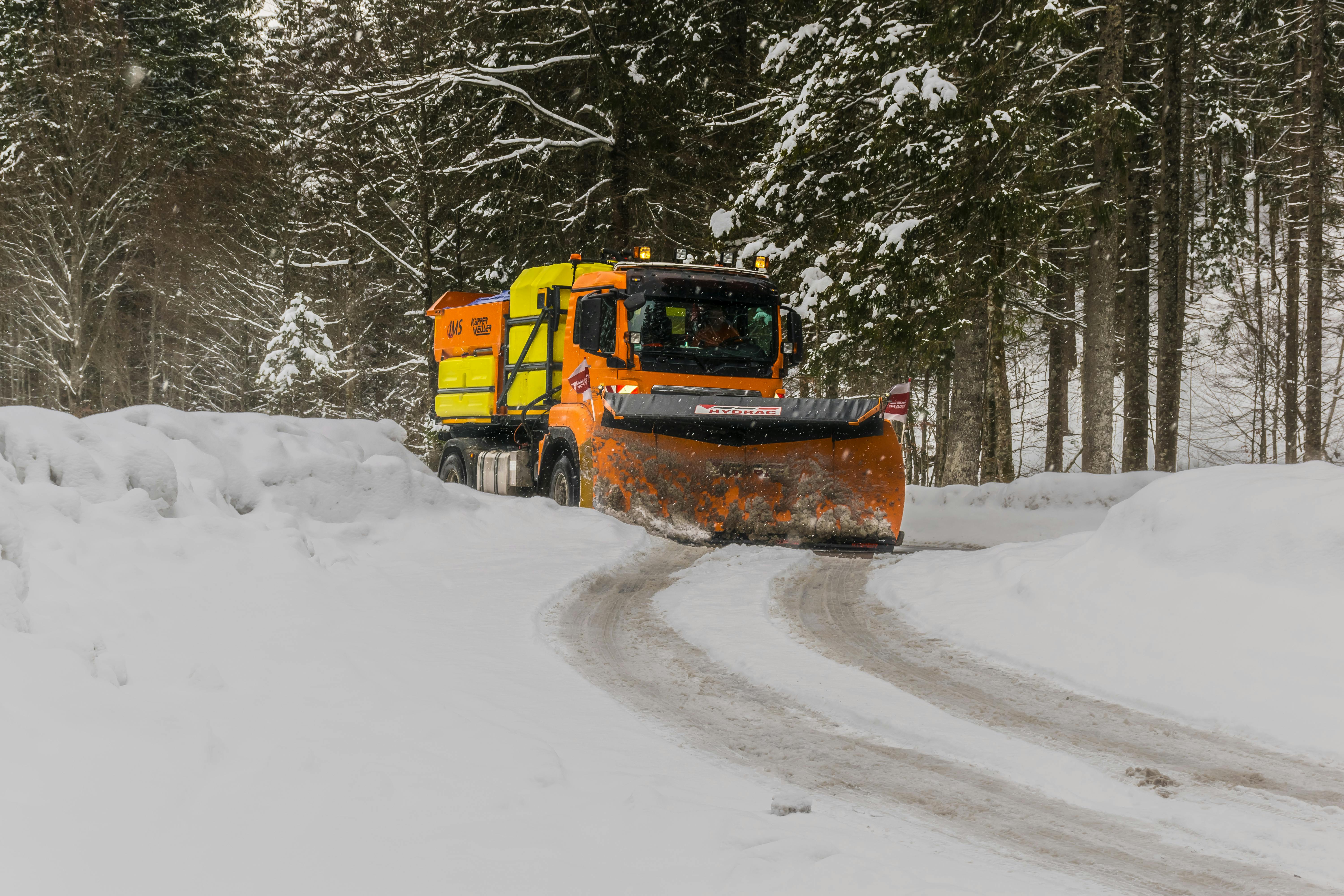13 Heavy-Duty Truck Winter Maintenance Tips

Why Heavy-Duty Truck
Winter Maintenance Matters
Winter introduces a whole set of challenges for trucks and their drivers.
Beyond the classic issues like icy roads and reduced visibility, extreme weather can lead to driver fatigue (it’s stressful and exhausting trying to drive in inclement weather!) and equipment breakdowns. These conditions threaten not just the truck, but everyone’s safety as well.
Here’s why keeping your truck in top condition during winter isn’t optional—it’s essential for safety, reliability, and cost savings.
1. Driver Safety
Your priority on the road? Staying safe. Harsh winter conditions like black ice or heavy snow increase risks.
A well-maintained truck provides dependable braking, better traction, and fewer chances of equipment failure. Your safety and the safety of every driver sharing the road demands preparation.
2. Safety of the Cargo
Cargo loss and damage aren’t just annoying—they can sink trust with your clients and hurt your bottom line. A properly winterized truck minimizes the environmental risks that compromise your load.
3. Avoiding Costly Delays and Breakdowns
No driver wants to find themselves stranded on the side of the road in a snowstorm. Winter maintenance drastically reduces your chances of breakdowns, keeping you running on time and trucking through route schedules smoothly.
4. Reduced Long-Term Costs
Winter wear can wreak havoc on underprepared trucks. Rust caused by road salt, engine strain from thickened oils, and tire breakdowns from bad traction all add up to avoidable expenses. Investing a bit in maintenance now means fewer hefty repair bills down the line.
5. Compliance with Safety Regulations
Failing to winterize your truck may result in non-compliance with road safety requirements, leading to fines or being taken off the road entirely. Something as simple as ignoring tire pressure regulations can escalate quickly into a dangerous (or at least, extremely expensive) situation.
How to Prepare a Truck for Winter
The first step to staying ahead of winter? Preparation. Here’s your checklist to keep your truck running like a champion, no matter what the forecast might hold.
1. Inspect Your Battery
Cold weather is notorious for draining batteries faster than any other time of year. Driving with a weak battery? Not an option. Check its charge level and replace it if necessary. Also, make sure your terminals are clean and well-connected to avoid starting trouble on frosty mornings.
2. Make Sure Your Tires Are in Good Condition
Your tires are the unsung heroes of winter travel. Check the tread depth to make sure you get proper traction on slippery roads.
Worn-out tires? It’s time to replace them—no cutting corners here. Don’t forget tire pressure either; colder temperatures naturally cause pressure to drop, so check and adjust it regularly to maintain stability.
3. Check Your Fluid Levels
When temperatures sink, your truck’s fluids feel it the hardest. Monitor these key fluids and replenish them as needed:
- Coolant and antifreeze: Check that they’re at recommended levels to prevent freezing or overheating.
- Fuel additives: Add anti-gelling additives to prevent diesel fuel from solidifying in extreme cold.
- Brake fluid, steering fluid, and transmission fluid: These should also be checked and topped up. Any deficiency could cause malfunctions right when you need them most.
4. Monitor Your Engine and Transmission Oil
Speaking of oil, winter temperatures demand appropriate grades for optimal performance. Too thick, and you’ll stress the engine; too thin, and you won’t have the right viscosity. Consult your truck’s manual or a trusted mechanic about the right grade for cold-weather operations.
5. Inspect the Brakes
Your truck’s braking system is its lifeline—especially on slippery winter roads. For heavy-duty trucks, air brake systems are standard and require some special attention during cold weather. Moisture build-up in the air brake system can freeze, causing serious braking issues.
Start by checking the air dryers; this critical component helps keep moisture out of the brake lines. Also, make sure you inspect the brake pads and rotors for wear and tear, making sure everything is in top condition. Test for any air pressure leaks and make sure your brake chambers are functioning correctly.
6. Focus on Your Hydraulics
Extreme cold can wreak havoc on your truck’s hydraulic system, making it less efficient, but properly functioning hydraulics will help keep any truck-mounted equipment fully operational during the chillier months.
The first step? Conduct a thorough check of your hydraulic fluid. Over time, hydraulic fluids can thicken in freezing temperatures, which slows operations and puts strain on the system. Refill or replace with a low-temperature-friendly fluid if necessary.
Inspect hydraulic hoses and seals for cracks or any signs of wear. Winter temperatures can make these components brittle, increasing the risk of leaks.
7. Make Sure Your Heater and Defroster Are Working Properly
Few things are more uncomfortable (and dangerous) than driving with a poorly functioning heater or defroster in freezing weather. Before winter sets in, test your truck’s heating system to ensure it operates efficiently. Address any cold spots or weak airflow issues right away.
Your defroster, meanwhile, helps maintain visibility by keeping your windshield clear of fog and frost. Check for any blockages in the vent ducts and confirm that the defroster works at full capacity. A warm cabin and clear sightlines make for safer, more comfortable winter driving.
8. Check the Exhaust
A blocked or damaged exhaust system can be hazardous any time of year, but it’s especially dangerous during winter. Snow, ice, or debris can clog the exhaust, causing harmful gases to back up into the cabin. Inspect the exhaust for leaks, dents, or cracks, and clear any potential obstructions.
9. Test Your Lights and Signals
Winter months bring fewer daylight hours, which means your truck’s lights and signals are working overtime to keep you visible and safe. Inspect all exterior lights—headlights, taillights, brake lights, and turning signals—to make sure they’re functioning properly. Replace any dead or dimming bulbs.
Keep your light covers clean and consider upgrading to LED options if you haven’t already. LED lights are brighter, longer-lasting, and more reliable in chilly weather.
10. Inspect the Windshield Wipers and Fluid
Your windshield is your window to the road, and keeping it clear is non-negotiable. Replace your windshield wipers annually, as they tend to lose their effectiveness after a year of use. For winter, consider heavy-duty or winter-specific wipers designed to handle frost and sleet.
Top off your windshield washer fluid with a winter-grade solution to prevent it from freezing. It’s one of the simplest maintenance tasks that can have a big impact on your visibility and safety during snow and rainstorms.
11. Avoid Cold Soaks
Cold soaks—when the engine fluids and components drop to ambient temperatures—are a common issue for trucks left idle in low temperatures. This condition can cause problems with starting power, battery life, and the alternator.
You can prevent cold soaks by:
- Using an engine block heater to keep the engine warm when the truck is parked.
- Running the engine periodically if temperatures are expected to drop below 5°F.
- Avoiding prolonged periods of inactivity (don’t leave your truck idle for more than 24 hours).
These steps can significantly preserve your truck’s battery and ensure that you’re ready to hit the road when needed.
12. Do an Emergency Kit Update
Winter weather can be unpredictable, so it’s smart to carry a well-stocked emergency kit. Make sure yours includes:
- A blanket or sleeping bag for warmth
- Water and non-perishable foods
- Extra clothing and winter boots
- First aid kit
- Flashlight and extra batteries
- Glow sticks or flares
- Reflector triangles
- Jumper cables
- Portable power unit
- Toolbox and basic repair tools
- A tow strap or recovery strap
- Snow shovel and ice pick
- Sand or kitty litter for traction in icy spots
- A battery-powered radio
Being prepared for winter emergencies can make a huge difference in staying safe and comfortable if unexpected delays or breakdowns occur.
13. Keep Your Fuel Tank at Least Half Full
During the colder months, condensation in a near-empty fuel tank can lead to water contamination, which may freeze and block fuel lines. To reduce this risk, always keep your fuel tank at least half full. Not only does this prevent freezing, but it can also provide extra weight and traction for your truck.
A Few Final Tips for Winter Maintenance
Routine inspections are your best defense against winter breakdowns. Create a maintenance schedule that prioritizes seasonal needs like these winter-specific tips. Prevention is far easier—and more cost-effective—than emergency repairs.
Remember, snowstorms and icy conditions can crop up quickly. Stay ahead by monitoring the weather forecast in regions you’ll be driving through. While you should always follow these winter maintenance tasks before any long trip, it’s still wise to get a general idea of what to expect when you’re out there on the road.
Ultimately, by being proactive, you’ll protect your vehicle, protect yourself, and minimize costly downtime.
Looking for all the essentials to help you breeze through your maintenance checklist without a hitch? At Hose and Fittings, we offer a wide range of supplies, equipment, and components to help you keep your fleet in tip-top shape.
Reach out to us today to stock up—and have a safe trip!

Relevant Link:


